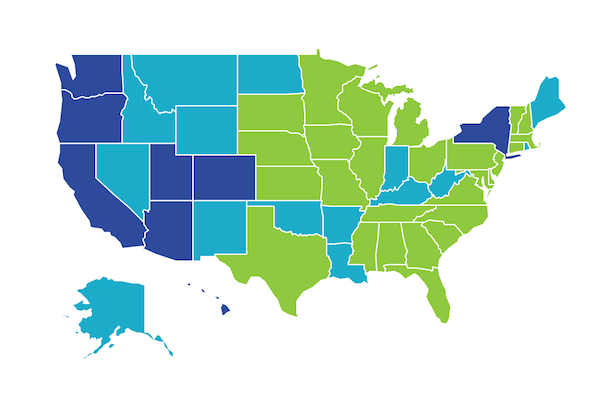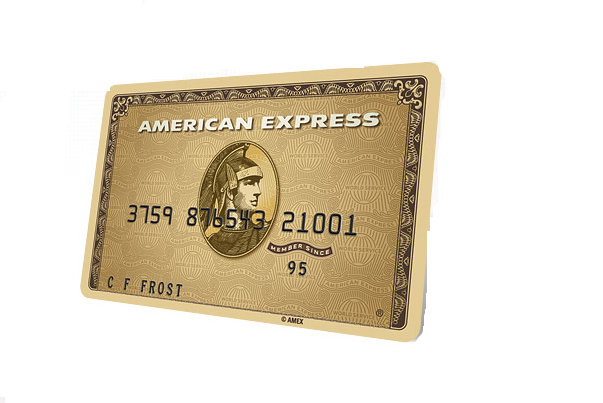If you’re regularly researching credit cards, you’ve probably stumbled across Nerdwallet a few times. The site is a resource for all types of credit cards, so they have quite a bit of data about the types of credit cards people are interested in across the country. NerdWallet recently released an infographic about the types of credit cards that are most popular with their visitors, along with the average credit scores and credit card balances in each state.
Pulling data between January – June 2016, they came up with some interesting facts about the type of credit cards over one million visitors are looking for. I think the results are relevant and representative of credit card trends across the country:

The most popular credit card type across 27 states were cash back cards. The least popular were travel rewards cards. These were actually limited to eight states total – most of them on the West Coast. Balance transfer cards (think Chase Slate) fell in between, being the most popular card type in 15 states.
While the data is fairly limited, I think it’s probably a good representation of general credit card trends. Most people aren’t savvy about rewards programs and tend to gravitate towards cash back cards for ease and convenience.
I always hear skeptics cite high annual fees as a reason for staying clear of them altogether. It makes sense that people who don’t know how to maximize points and miles would opt for no-fee cash back credit cards.
The fact that balance transfer credit cards were the second most popular card types among NerdWallet visitors isn’t surprising either, considering nearly 40% of Americans have credit card debt and are likely using balance transfer offers to combat high interest fees.
In Alaska, the state with the highest average individual credit card balance, balance transfer credit cards were the most popular card types.
A few other things I picked up from the data provided by Nerdwallet, which I thought were interesting:
- In states with the highest average credit scores, the most popular card types were cash back cards.
- South Dakota = 699, New Hampshire = 699, Vermont = 700, Minnesota = 707.
- In states with the lowest average credit scores, the most popular card types were cash back and balance transfer cards.
- Mississippi = 645 (cash back cards)
- Louisiana = 648 (balance transfer cards)
- Nevada = 650 (balance transfer cards)
- Georgia = 651 (cash back cards).
- In states with the highest individual credit card balance, the most popular card types were balance transfer and cash back cards.
- Alaska = $7,446 (balance transfer cards)
- Connecticut = $6,323 (cash back cards)
- Virginia = $6,279 (cash back cards)
- New Jersey = $6,231 (cash back cards).
- In states with the lowest credit card balance, the most popular card types were cash back and balance transfer cards.
- West Virginia = $4,585 (balance transfer cards)
- Mississippi = $4,554 (cash back cards)
- North Dakota = $4,536 (balance transfer cards)
- Iowa = $4,317 (cash back cards)
The one thing I wish we could get more insight on is why travel rewards credit card popularity is clustered around the West Coast, with the exception of New York. Maybe it has to do with the way rewards credit cards are marketed. Or maybe factors like income can help explain it. Or maybe it’s the large points and miles community we’ve got on the West Coast that are skewing the statistics.
We’re working purely with NerdWallet user data, so it may not be the most comprehensive sample to pull from. However, I think the results do align with the popularity of credit cards among “normal” people.
I’d love your feedback on this. What do you think explains the huge geographic discrepancy when it comes to the popularity of travel rewards credit cards?


Yes, interesting data. Might be that people out west are more likely to aspire to flying to a vacation destination than people in the east and middle (with many more options within a reasonable car drive). Remember, we’re talking about folks with an average credit score below 700, so aspirational international vacations might seem way out of reach.
That’s probably true (I imagine, especially so for folks who live in Hawaii). If it wasn’t for these numbers, I would have assumed travel rewards credit cards would be more popular in states with higher average credit scores, since those cards typically require good credit for approval.